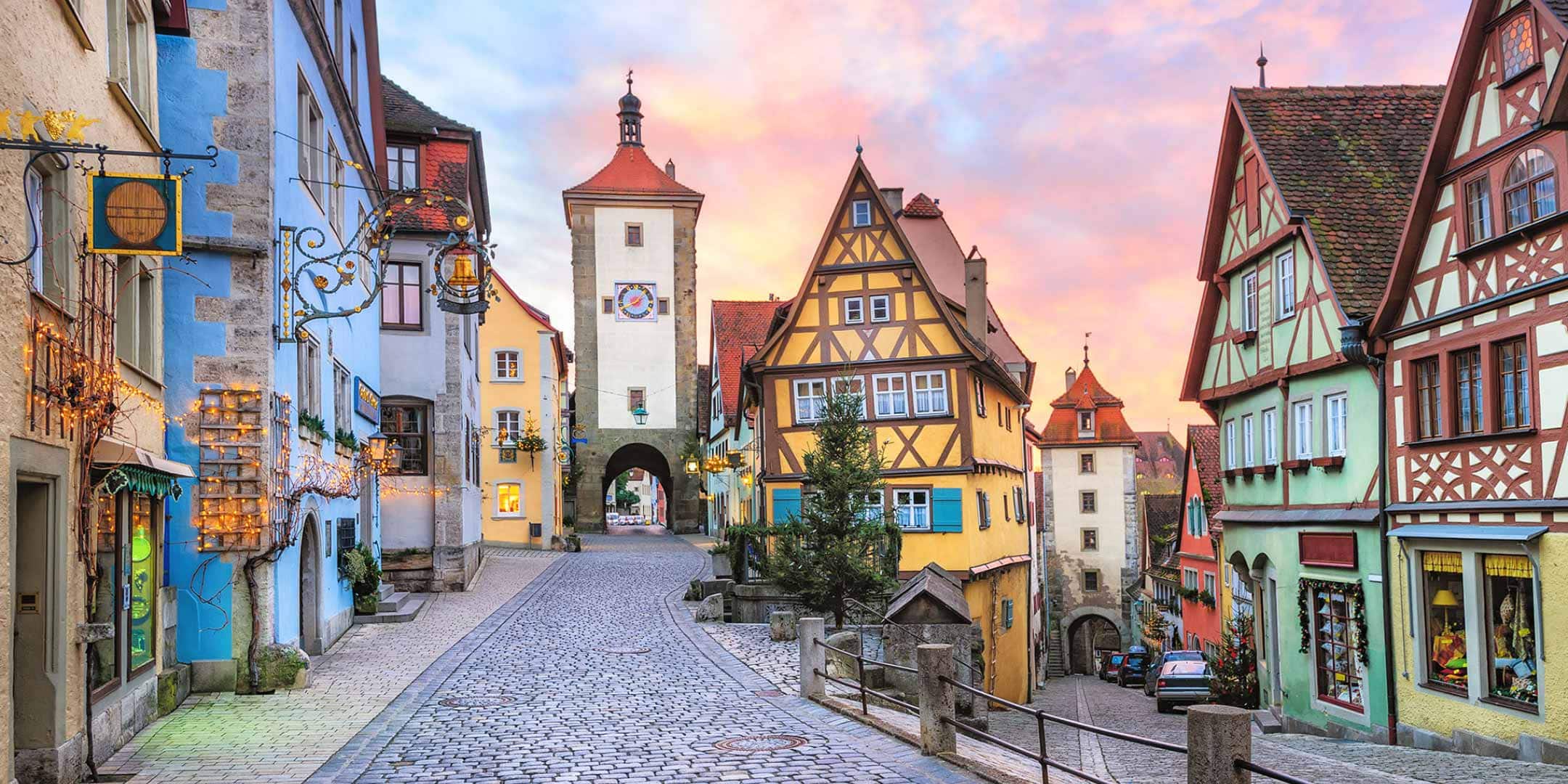Exploring the top landmarks in Germany is an adventure like no other. Although the country is not the first that comes to mind when you think of European highlights, Germany has a lot to offer.
No, seriously, Germany has world-renounced monuments that combine exceptionally well with its medieval towns, fairytale castles, and natural treasures. You don’t believe me? Ok, let me show the diverse mixture of Germany’s landmarks.
Are you ready?
Let’s go!
Brandenburg Gate, Berlin
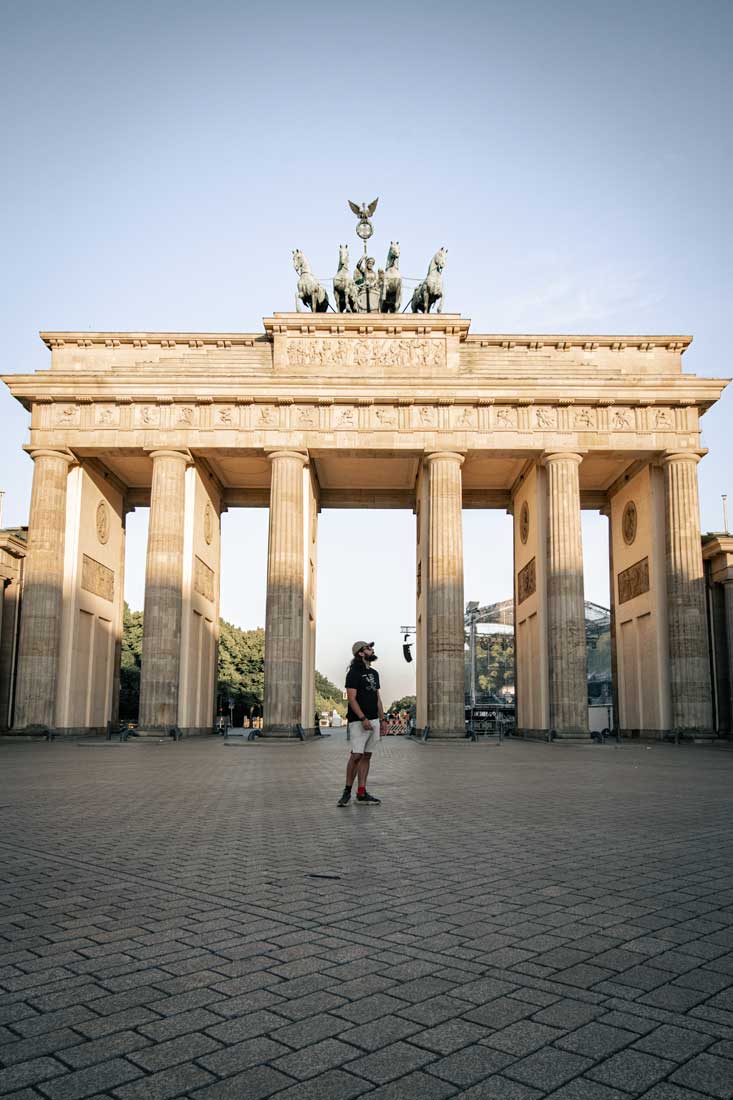
Out of all landmarks in Germany, the most recognizable one is the Brandenburg Gate. The symbol of Berlin was commissioned by the Prussian king Frederick William II and today is probably the most famous 18th-century neoclassical monument in the world.
The Brandenburg Gate was built to commemorate the suppressing the Dutch popular unrest. Originally called the Peace Gate, its current name derives from the fact that it replaces a former city gate that marked the start of the road from Berlin to the town of Brandenburg an der Havel.
Created by Carl Gotthard Langhans, the Brandenburg Gate consists of 12 columns that form 5 passageways – a design based on the gate to Athen’s Acropolis. On the top, you can see a four-horse chariot driven by the Roman goddess of victory – Victoria.
Berlin Wall
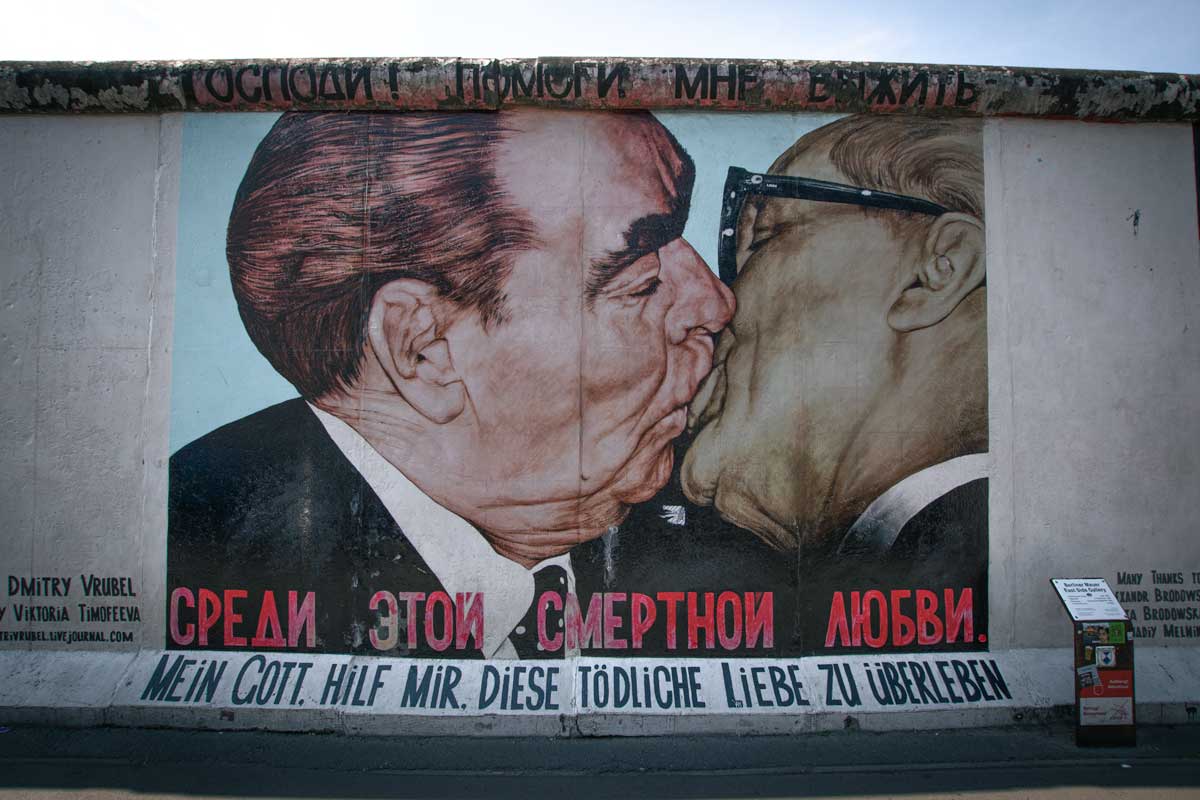
If we’re talking about the most famous landmark in Germany, the Berlin Wall has to be there. I mean, there’s hardly anyone in the world who hasn’t heard of it. But why was the wall built in the first place?
After WWII, Germany was divided between Allied occupation zones and Soviet ones. In 1949, the Allied zones became the Federal Republic of Germany (FRG), while the Soviet ones became the German Democratic Republic (GDR).
Because the FRG economy was fastly recovering (while the same cannot be said for GDR), many people fled there, and a physical barrier between the two Germanies had to be built – the Berlin Wall.
The wall came down in 1989, but large parts of it can still be found in Berlin. The East Side Gallery is approximately 1.3 km of history and art, including the most famous wall graffiti – “The Kiss”.
The Reichstag, Berlin
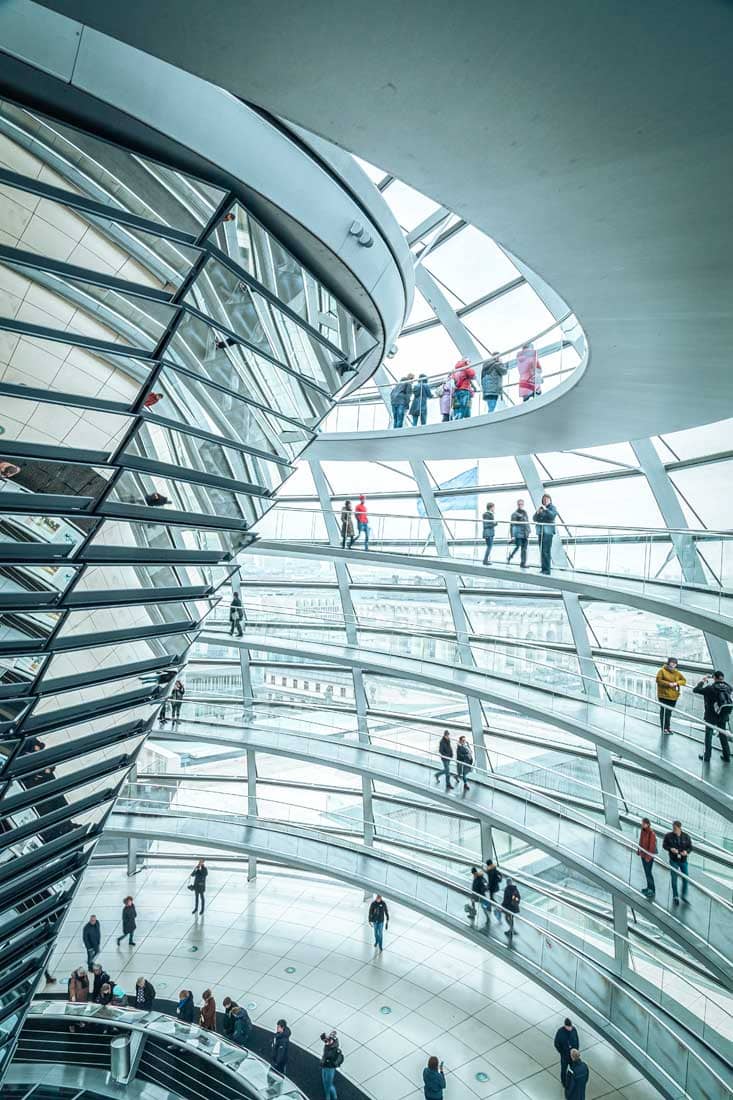
The Reichstag Building is the German parliament, but unlike most parliaments, this one is among the most significant landmarks in Germany. It’s also open for visitations.
Surviving a fire, an occupation, and a few bombings, today, the Reichstag is known for its roof terrace and modern glass dome that welcomes visitors every quarter of the hours between 8:00 AM and midnight.
Fun Fact
Inside the Reichstag, you can find Cyrillic graffiti left by the Soviet soldiers that captured Berlin in 1945.
Museum Island, Berlin
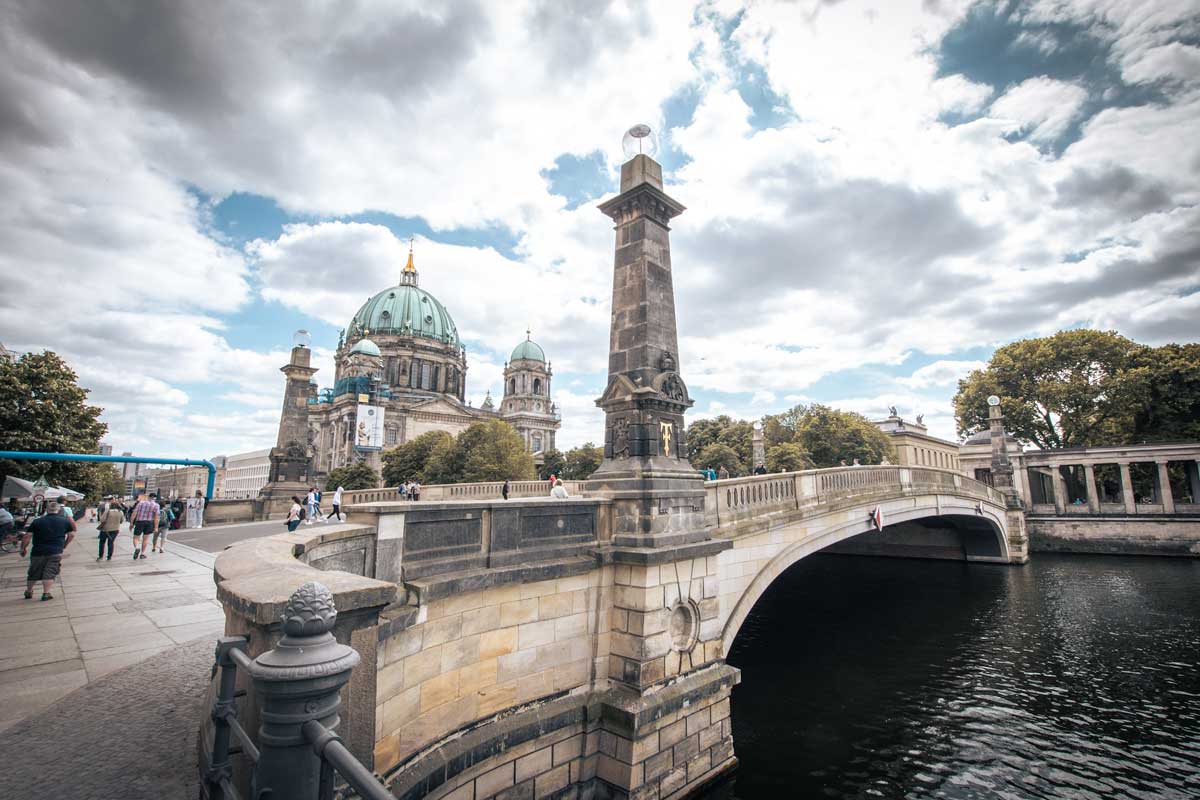
It won’t be a complete list of landmarks in Germany if there isn’t at least one museum, right. I mean, this is Europe – the holy land of museums! In Germany’s case, it’s not just one museum but a whole island of them!
That’s right, the UNESCO-recognized Museum Island is home to five top-notch museums (The Pergamon Museum · The Bode Museum · The Neues Museum · The Alte Nationalgalerie · The Altes Museum) and also the most famous cathedral in Berlin – Berliner Dom.
If you ever find yourself in the capital of Germany, make sure to set aside at least a day to explore it. The island may not be that big, but the museums are pretty awesome.
Romantic Road, Bavaria

This one is one of the most picturesque landmarks in Germany. Yes, there’s a literal Disney Castle down the list, but trust me, if you are on a photo hunt, the Romantic Road is the most unmissable attraction.
Full of traditional villages, churches, vineyards, and all kinds of middle-aged gems, the cherry on the top is the Rothenburg ob der Tauber village. Imagine medieval half-timbered houses, cobblestoned alleys, and gothic churches all around you. Not a single piece of modern architecture. You’d wanna visit that place, right?
Marienplatz, Munich
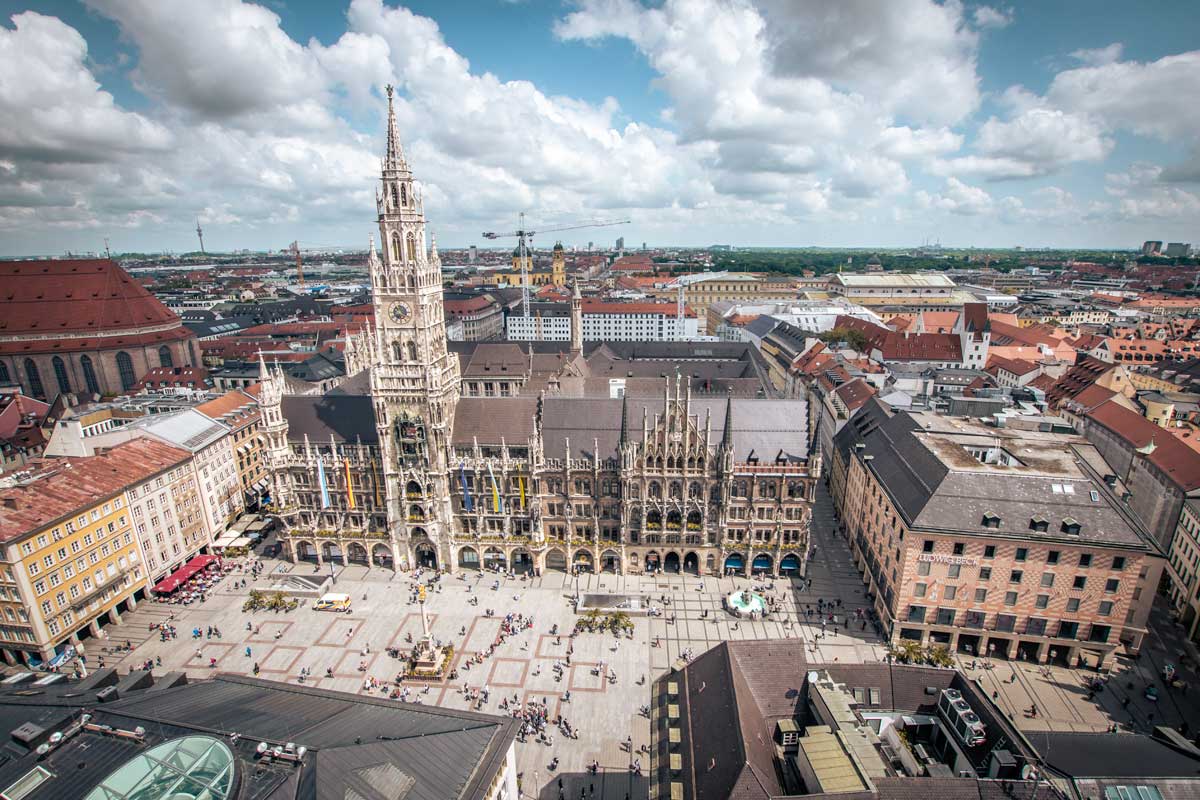
Next on the list, we have one of the most famous squares in the country. Munich’s Marienplatz has been THE meeting place in town for more than 900 years. This square has seen everything through the years, from grain markets to medieval Kings and Bayern Munich’s title celebrations.
Its most noticeable features are the Old and New Town Halls (the new one is way cooler), the medieval clock that plays puppet shows ( Glockenspiel), and Mariensäule – a beautiful Marian column that gave the square its name.
Römer, Frankfurt
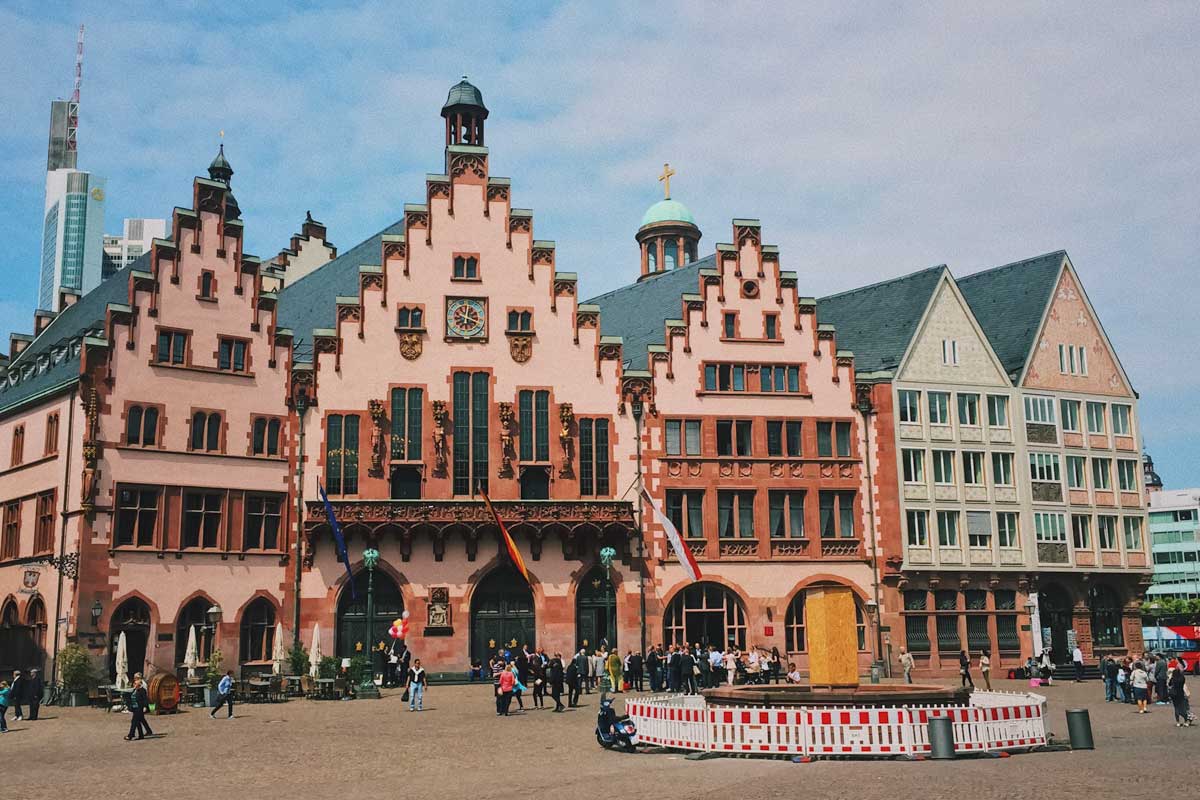
A neo-Gothic masterpiece, Romer is the name of Frankfurt’s medieval town hall. Dating back to 1405, The Römer used to be the home of a wealthy merchant family until they sold it to the city council.
Today thousands of people visit the Römer to marvel at Römerhalle and Schwanenhalle – the two halls that have remained unchanged for the last 600 years.
Frauenkirche, Dresden
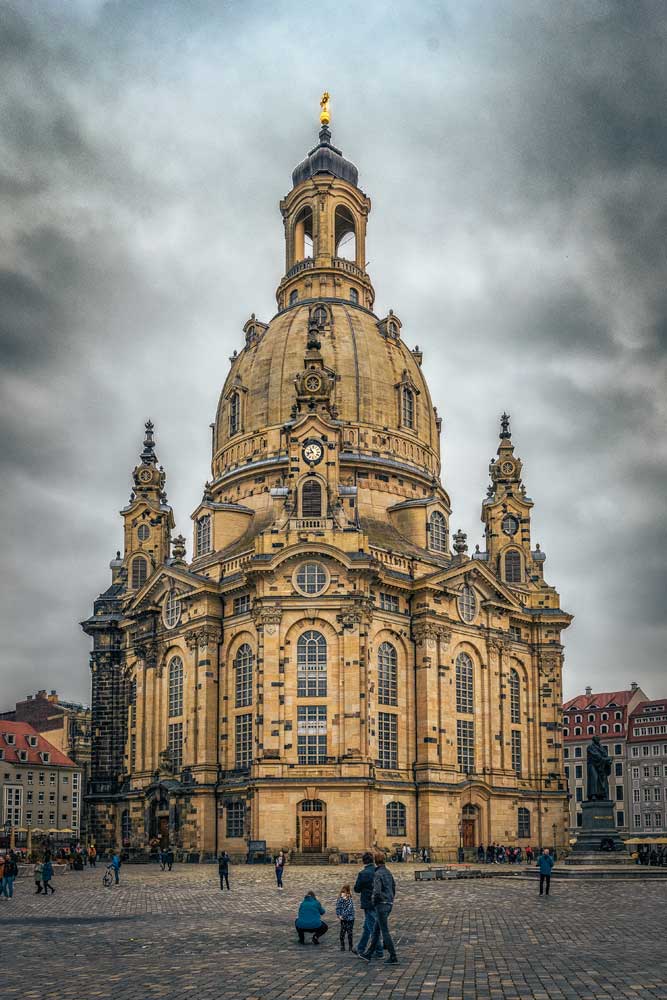
The next german attraction is both old and new. Dresden’s Frauenkirche is a Baroque-era Protestant-Lutheran church built between 1726 and 1743. It’s one of the biggest sandstone buildings in the world and a monument the city of Dresden is proud of.
Wait, how is this 300-year-old church a new attraction?
Well, the church may have been built three centuries ago, but WWII’s bombings reduced Frauenkirche to nothing but a pile of rubble. The reconstructions took more than 10 years and became a symbol of reconciliation for the city.
Cologne Cathedral
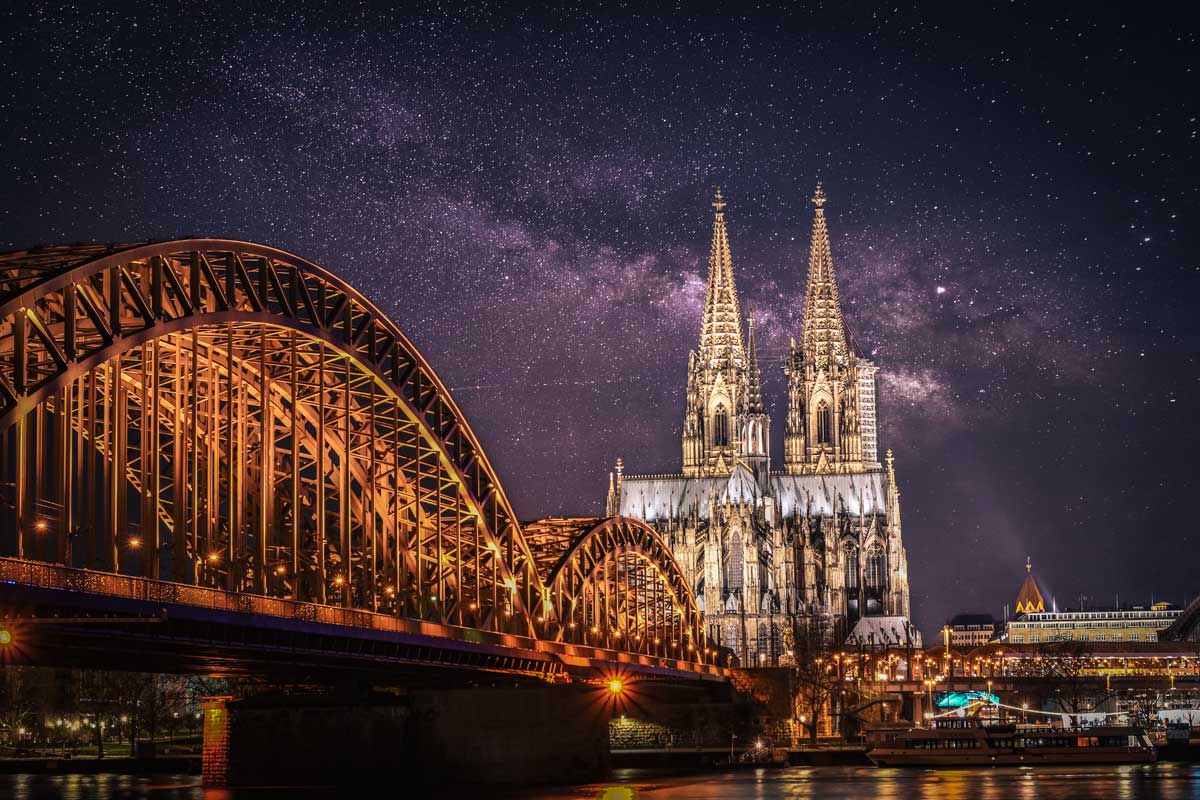
Out of all German landmarks, nothing stands more majestic than the Cologne Cathedral. Easily the most famous church in the country, the cathedral is an architectural masterpiece that took more than 600 years to be completed. That’s right, six…hundred…years! The project started in 1248 and finished in 1880. How insane is that?
A UNESCO World Heritage Site since 2008, the cathedral is one of the top churches in Europe and deserves a spot on every German itinerary. Hell, it deserves a spot on your European itinerary too!
See Also: The Most Awesome Landmarks in Italy
Coolest Landmarks in Germany: Castles
I bet you didn’t expect that one. I mean, this post is called the coolest German landmarks, not the coolest UK landmarks. There shouldn’t be that many castles.
Well, prepare to be stunned because there are plenty of fantastic castles in Germany too, and their best one beats all its UK cousins.
Neuswanstein Castle, Bavaria
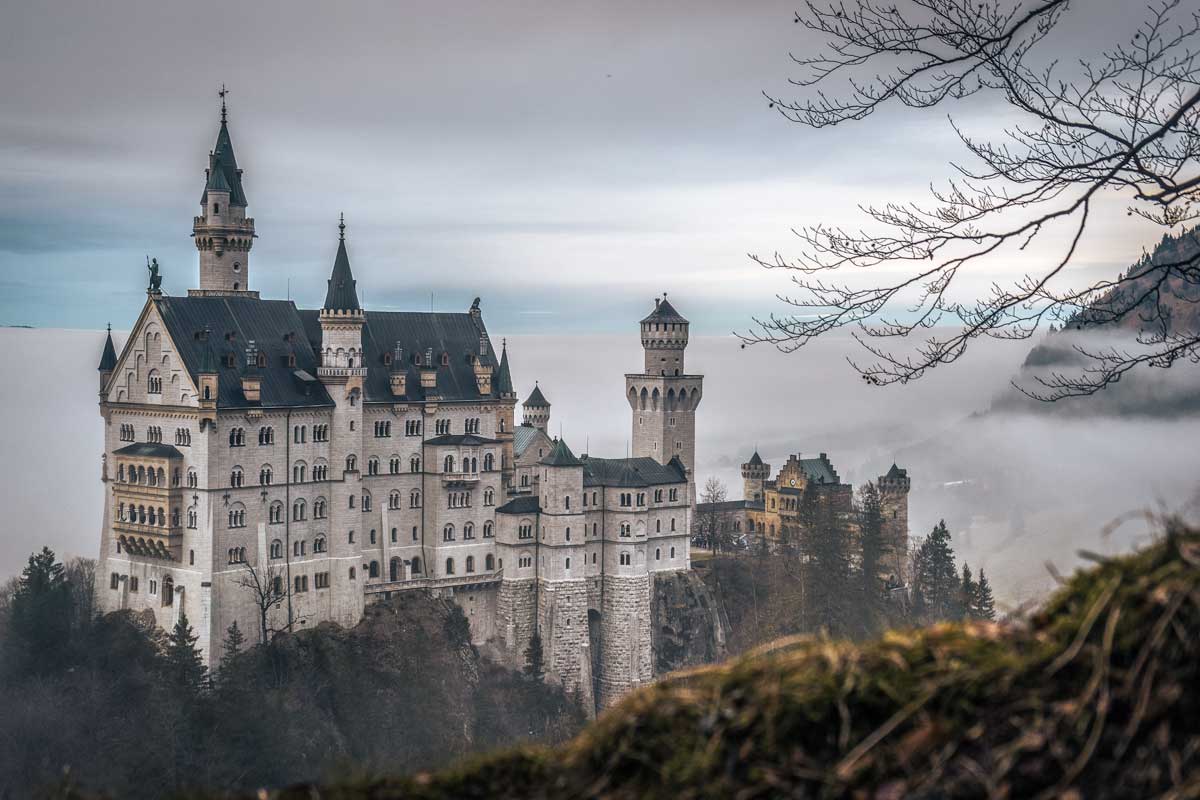
This 19th-century masterpiece of a castle was built by Ludwig II (also known as the Mad King) to epitomize the romanticized palaces in Richard Wagner’s operas and is the most beautiful castle in Germany.
Sitting above the south Bavarian village Hohenschwangau, Neuschwanstein will stun you with its spires, towers, courtyards, dramatic opera-like interior, and basically everything you can ask for from an enchanted castle.
In fact, the castle looks so magical that Disney used it as inspiration for their Cinderella castle, which is also featured on their logo today.
Since the castle’s name is almost unpronounceable to non-german-speaking folks, most people refer to Neuschwanstein as the Disney Castle.
Nymphenburg Palace, Munich
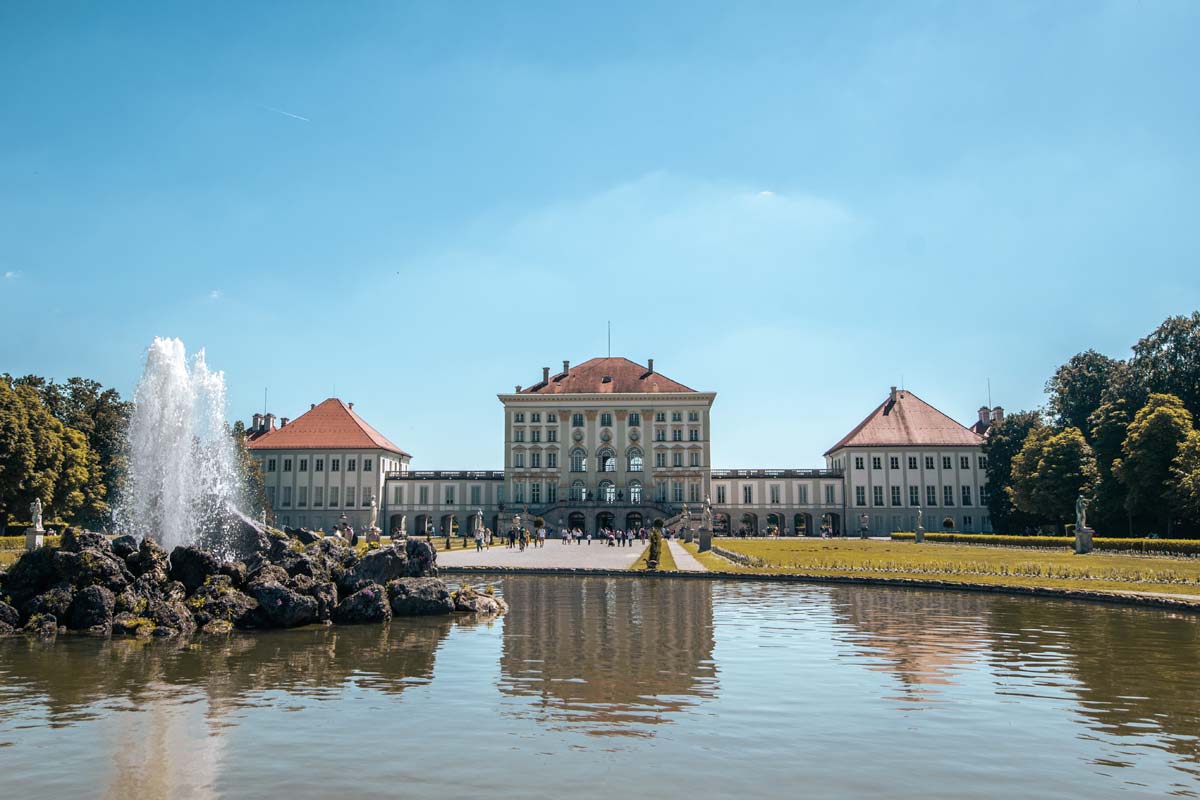
Completed in 1675, Nymphenburg Palace was built as a summer residence for Maximilian II Emanuel. The palace was also home to 5 other bavarian monarchs, and each of them made sure to leave its mark.
Its most famous hall is named the Hall of Beauties. There, Bavarian King Ludwig I hung 36 portraits of beautiful women from all classes of society.
The most impressive part of the Nymphenburg Palace for me is the gardens, though. Once modeled after the Verssallis ones, today, the gardens are this giant wild park that lets you escape the hustle and bustle of Munich and enjoy pristine nature and wildlife (yes, there are swans, ducks, deers, and God knows what else).
Heidelberg Castle
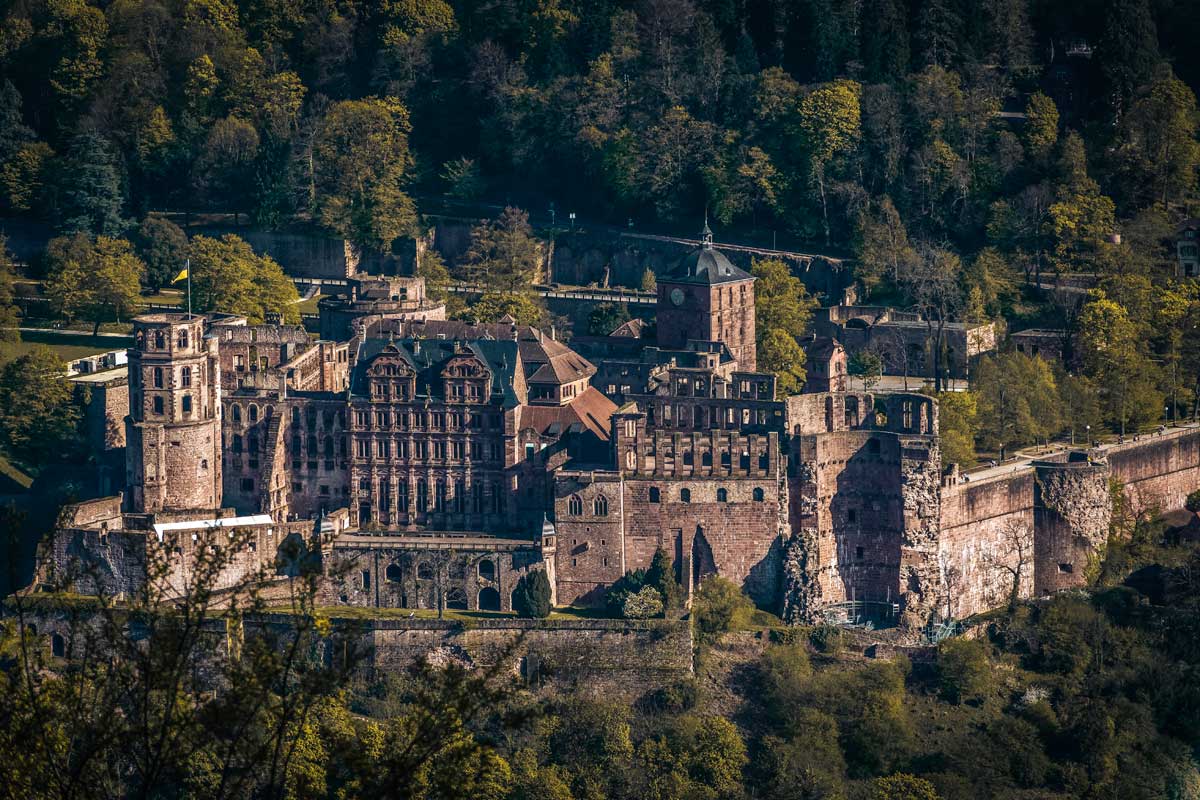
The next gal on the list is an old one. Erected initially 850 years ago (1184), the Heidelberg Castle was expanded in 1294 just to have its upper part destroyed by lightning in 1537. Further extended in 1650, the castle was hit by a lightning bolt once again in 1764, this time causing a devastating fire that burned quite a bit of it.
You must be thinking: Hit by lightning twice? This castle must be cursed. I guess the locals thought the same since Heidelberg Castle is uninhabited today, being reduced to not really a castle but more of a castle ruin.
However, considered to be among the most important Renaissance structures north of the Alps, some of Heidelberg’s parts were restored for tourists.
Eltz Castle, Wierschem
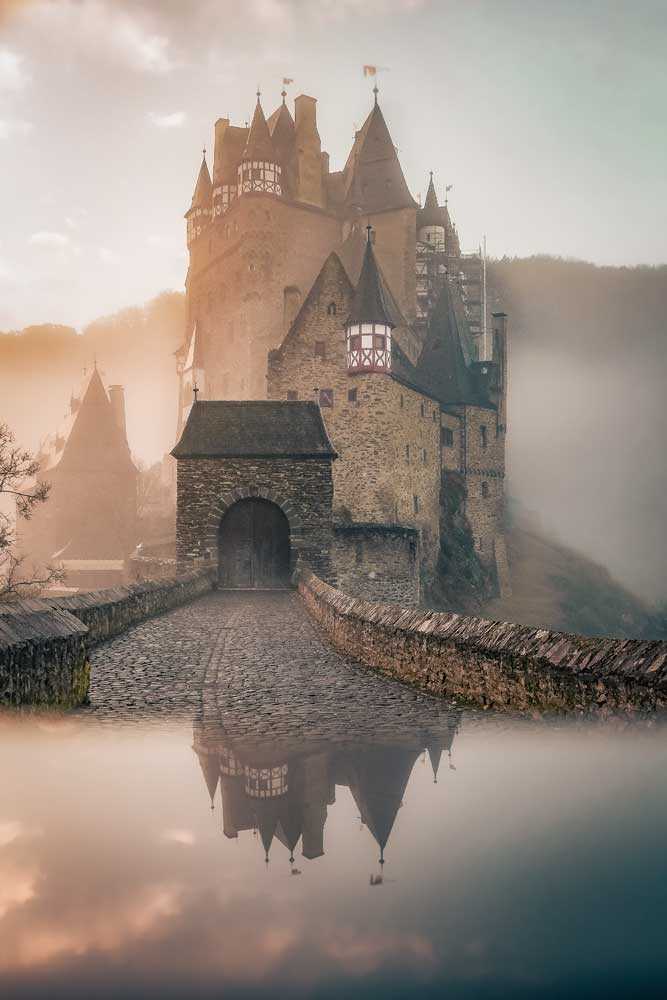
With 850 years of history behind its walls, this 8-tower beauty is straight taken out of a fantasy book. I mean, just look at it!
Situated on top of a rock, inside a lush valley with the Elzbach River flowing around it. Absolutely gorgeous. No way I leave it out of my German landmarks list.
Still owned by the same family that lived there in the 12th century (the Eltz Family), this is one of the most picturesque castles you can visit in Europe.
Sanssouci Palace, Postdam
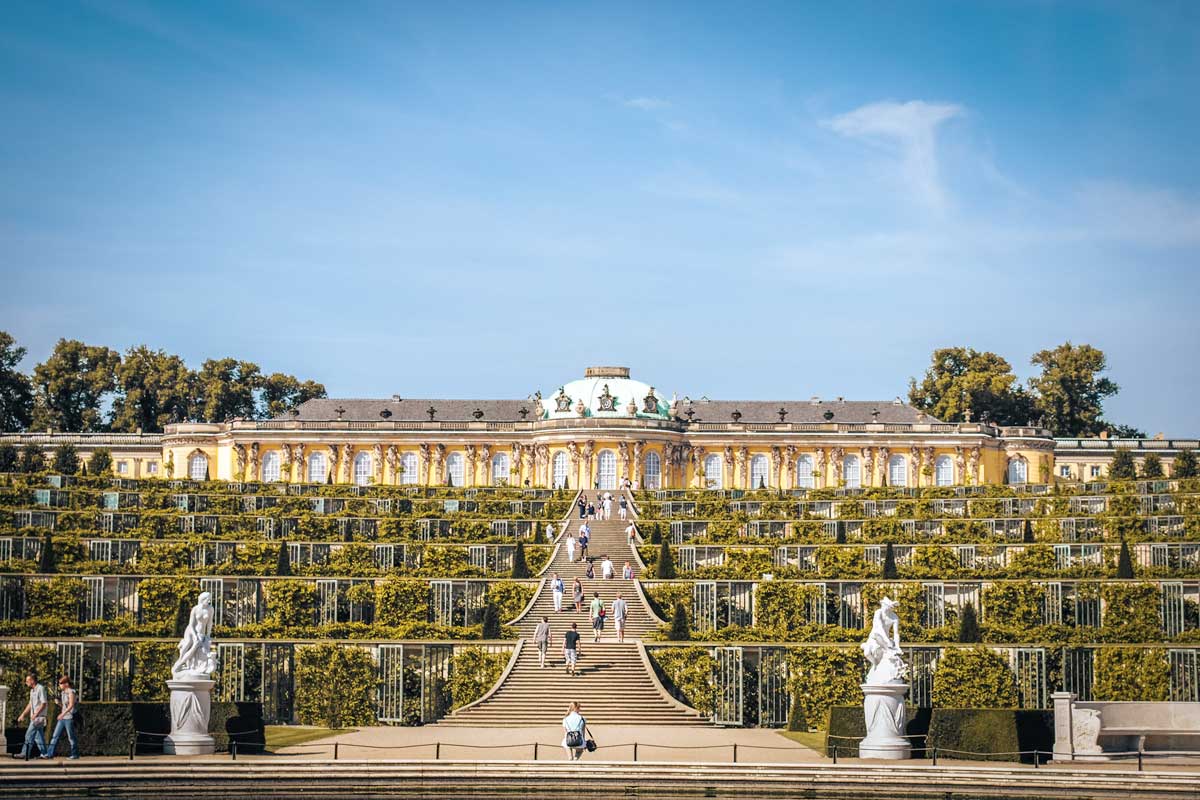
Built by Prussian King Frederick the Great to act as his summer palace, Sanssouci is considered the German rival of the Versailles Palace.
And this is just the Old Palace.
Besides that, there’s also a New Palace (that was even more impressive if you ask me), giant gardens, and a few awesome structures around them (such as the peculiar Chinese House).
The palace’s name derives from the French phrase sans souci, which means “carefree”. It was built with the sole purpose of unwinding, and today, 300 years later, it still serves that purpose flawlessly.
See Also: The Most Incredible Landmarks in Spain
Top German Landmarks: Natural Treasures
We’ve seen all kinds of german buildings and castles by now, so it’s time to explore the natural part of the country. You didn’t think Germany was all covered in concrete, did you?
Black Forest, Baden-Württemberg
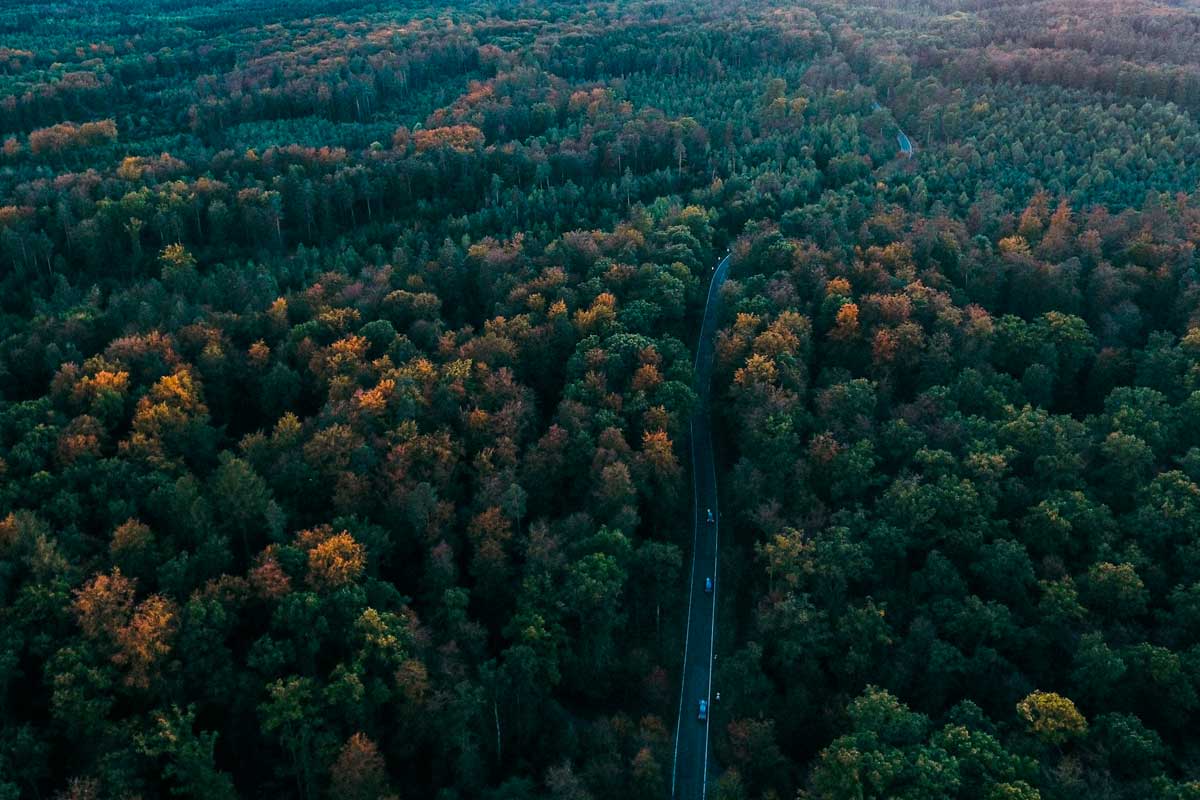
Let’s start this section with a cool forest. Wait, what? The Black Forest (Schwarzwald) isn’t really a forest? Well yeah, technically, the Black Forest is a large forested mountain range.
Source of the legendary Danube and Neckar rivers, Schwarzwald is most famous for inspiring Brothers Grimm’s fairy tales. Although there are no houses made of gingerbread, cake, and candy, the Black Forest is home to plenty of attractions, including one of Europe’s most fashionable spa-towns – Baden-Baden, the medieval-styled village of Calw, and Badische Weinstrasse (Badische Wine Road).
Lake Constance

Probably the most famous natural german landmark, Lake Constance offers some of the best views in the country. Shared between Germany, Switzerland, and Austria, the calm, mirror-like waters reflecting the majestic Alps in the background, paints a picture every photographer dreams about.
Also known as Lake Bodensee, the 270km lake shoreline is home to numerous cute little towns and villages that guarantee the perfect vacation experience.
Bastei Bridge, Saxon Switzerland National Park
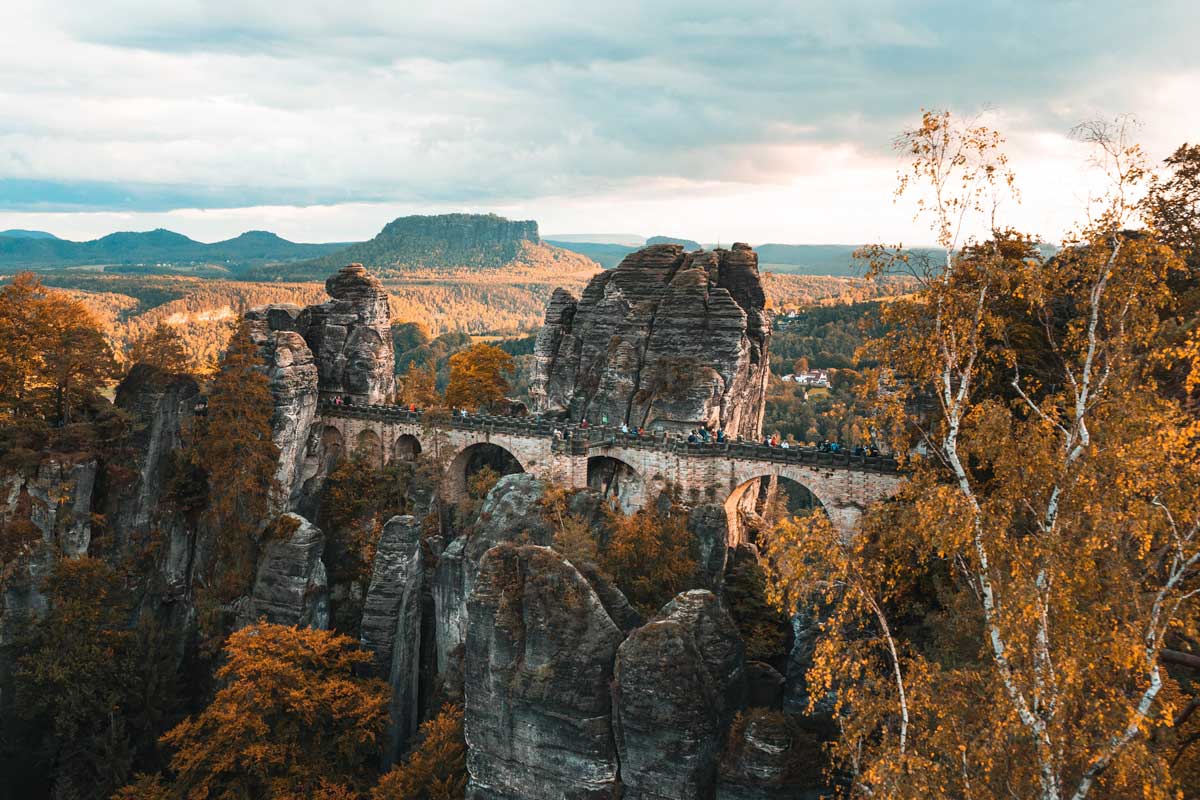
Speaking about landmarks in Germany, we just can’t miss the Batei Bridge. Although not exactly a natural attraction, it still qualifies as one since the bridge is that cool, not because of its amazing architecture or something but because of the jagged sandstone rocks around it.
The national park may be called Saxon Switzerland, but the Bastei Bridge is not located in Switzerland. It’s located in southwest Germany, quite close to the Czech Republic, actually.
Once part of a glorious castle, today, the Bastei Bridge leads to a viewing platform that offers lovely views of the Elbe River and Elbe Sandstone Mountains.
Eisbachwelle, Munich
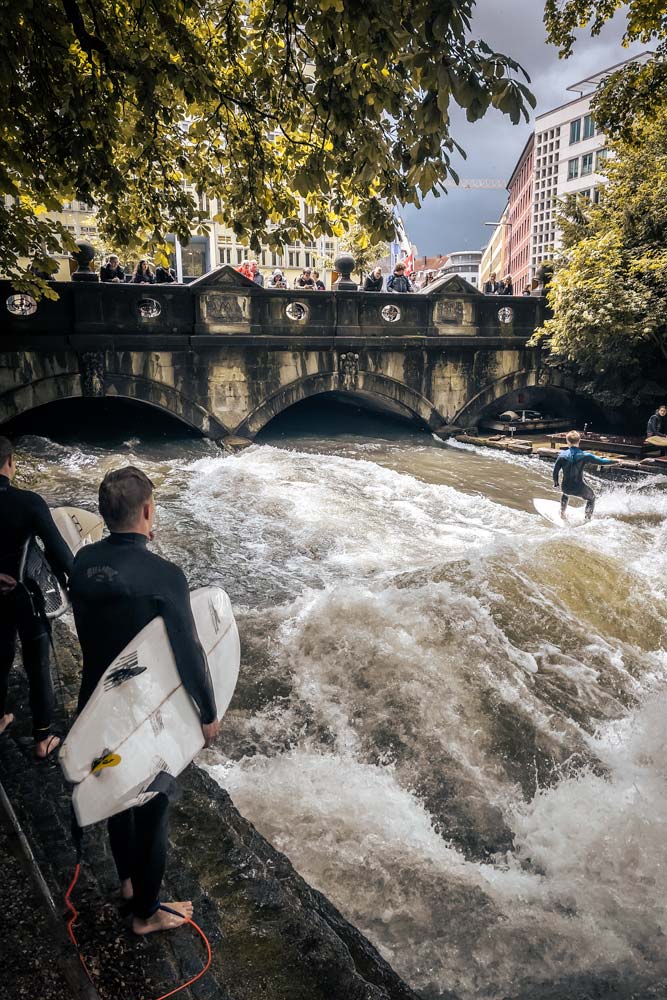
Out of all attractions in Germany, this one has to be the most extraordinary. Would you believe me if I told you that there is a top surfing spot in the center of Munich?
That’s right! Located on the south end of the English Gardens, Eisbachwelle is the best city surf spot on the continent. Not sure if there’s another one at all, actually.
I have no idea how they did it or how come it’s not too dangerous to be allowed by the city hall, but it’s absolutely one of the coolest things I’ve seen in Europe.
Mount Zugspitze

Rising 2,962m (9,700 feet) above sea level, Moun Zugspitze may not be as tall as some of its Alp neighbors, but it’s still Germany’s tallest peak. Actually, from the top, you can see more than 400 other peaks scattered around 4 countries – Austria, Switzerland, Italy, and Germany, of course. Not bad at all!
Being that tall, it’s no wonder Mount Zugspitze is one of the very best places in the country to enjoy winter sports.
If skiing is not your thing, the mountain still has plenty to offer. Stunning natural terraces, hiking routes, two toboggan runs, an igloo village, and even a glacier (Zugspitzplatt glacier).
See Also: The Best Landmarks in Portugal
Best Landmarks in Germany: Events
The following German attractions are not physical ones. Of course, one can argue if they can even be considered landmarks or not, but for me, they both deserve a spot on the list.
The Christmas Markets
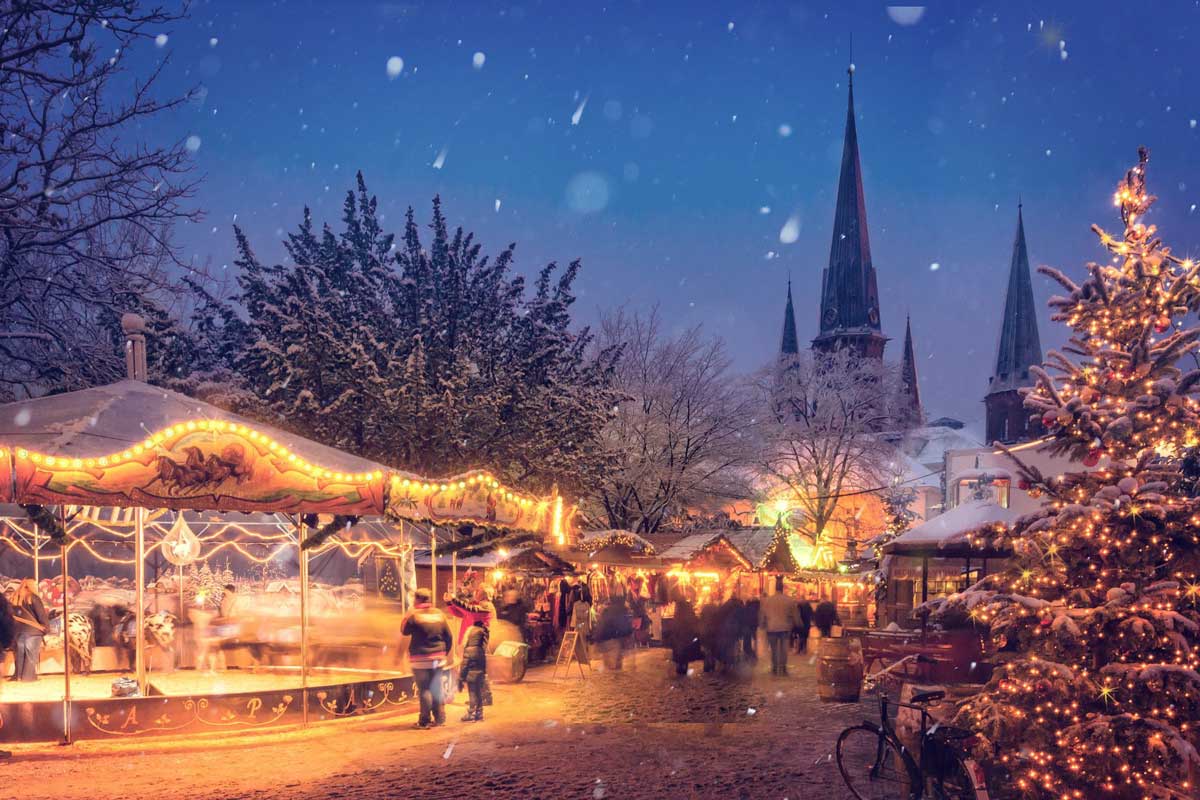
Dating back hundreds of years, the Christmas Market tradition is one of Germany’s most significant contributions to the world. While you can find them all around the globe today, the traditional German Christmas markets offer such a unique experience that makes winter one of the best seasons to visit Germany.
The first real Christmas market was held in Dresden all the way back in 1434. Today Dresden’s Striezelmarkt is still among the best markets in the country. The other noticeable ones are Christkindlesmarkt in Nuremberg, Lucia Christmas Market in Berlin, Weihnachtsmarkt in Leipzig, and the Munich Christmas Market in Marienplatz.
Oktoberfest, Munich
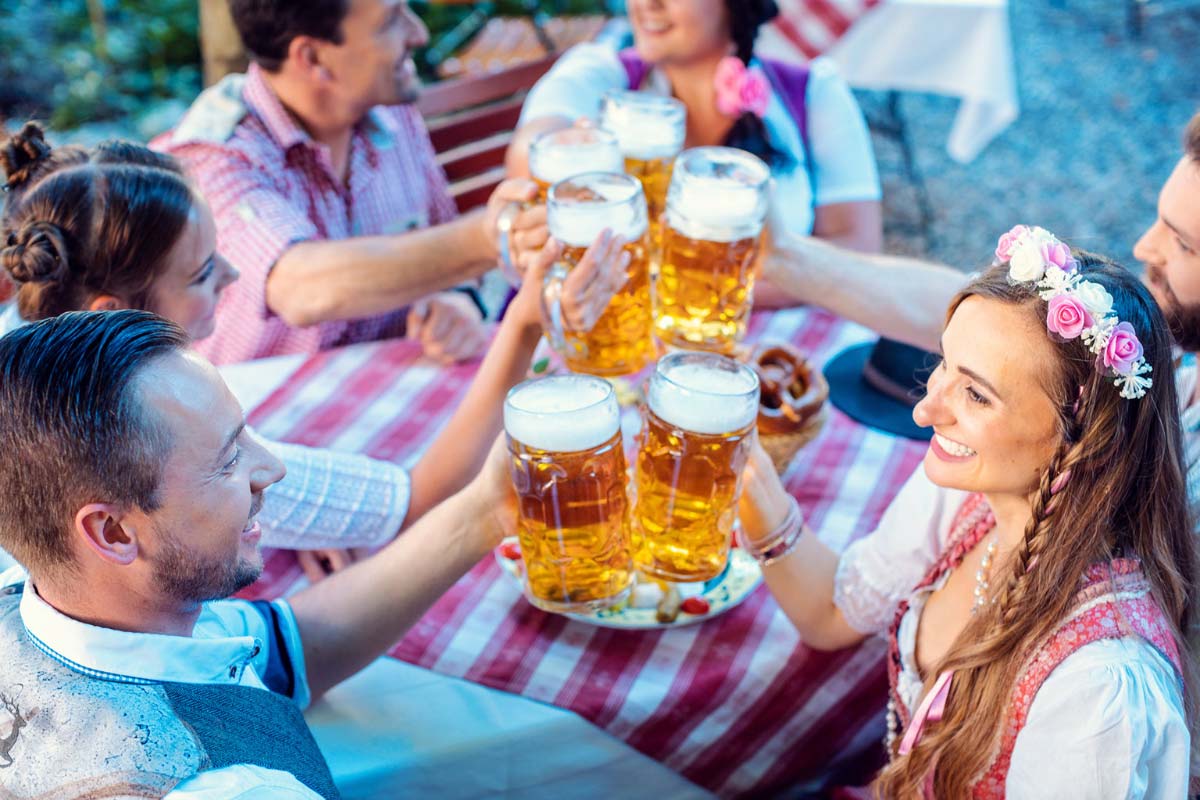
We finish the list of the coolest landmarks in Germany with the biggest beer festival there is – Octoberfest. Held annually in Munich, the world’s largest Volksfest runs for 16 to 18 days and attracts millions of visitors.
I mean, who can resist 2 weeks of beer drinking, right?
The festival features amusement rides, side stalls, and all kinds of games, but the star of the show is, of course, the beer. In 2014 it was estimated that during the 16-day festival, 7.7 million liters of beer were consumed. Just wow!
That’s all from me, I hope you have the chance to see the cooles landmarks in Germany in person.
————————————
If you haven’t planned your trip there yet, find out how I plan my trips!
————————————
I have 24 bucket list ideas for Germany. See my impossible bucket list of 1700+ adventures!
Which one is your favorite?
Some of the above are affiliate links and I will earn a percentage of the sale if you purchase through them at no extra cost to you. This helps keep my site running – so thanks in advance for your support!


